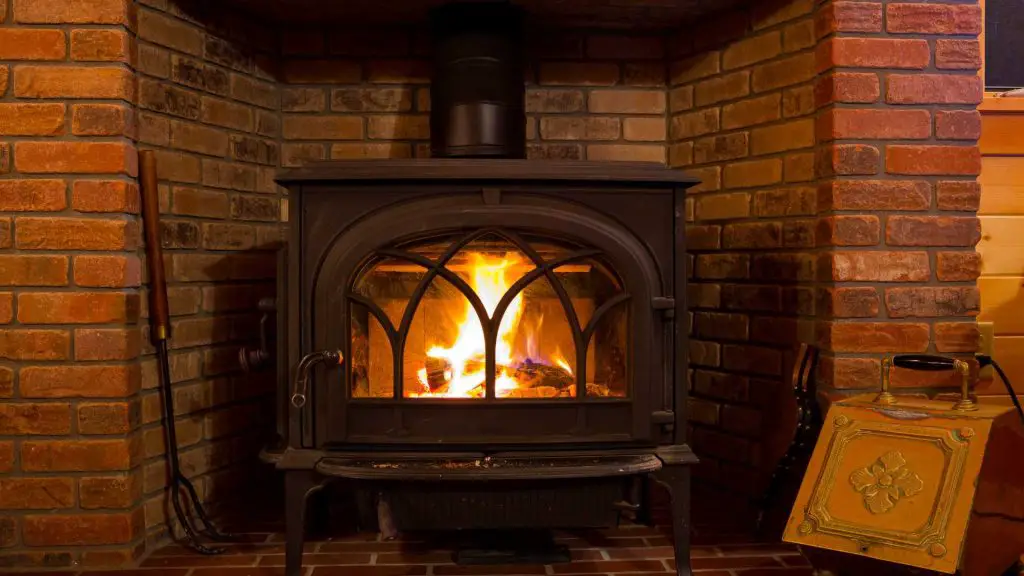Converting a fireplace to a wood stove requires a bit of planning, preparation, and a professional approach. It’s not a job for the unskilled, and you need to take the necessary precautions to make sure your installation is safe, efficient, and effective. Here’s a list of checklists to help you convert your gas fireplace to a wood stove.
#1: Check the Chimney
The first thing you need to do is to check the condition of your chimney. Gas fireplaces usually use smaller pipes and vents, which may not be suitable for wood stove installations. Make sure your chimney is large enough to handle the amount of smoke that will be produced by your wood stove.
Also, make sure your chimney is in good condition. Check for cracks, gaps, and other signs of damage. If you find any problems, have them repaired before installing your wood stove.
#2: Choose the Right Stove
Choosing the right wood stove is essential for a successful conversion. You need to choose a stove that is the right size for your space, with the right heating capacity to keep you comfortable during the winter months.
You should also take into consideration the style and design of the stove, as well as the type of fuel it burns. Make sure you choose a stove that meets your aesthetic and functional needs.
#3: Clean the Fireplace
Before you begin the conversion process, you need to clean out your gas fireplace thoroughly. Remove any debris, ashes, and soot that may have accumulated over time. This will ensure that your new wood stove can operate efficiently.
#4: Install a Chimney Liner
If your chimney is not suitable for a wood stove, you may need to install a chimney liner. A chimney liner is a metal or ceramic pipe that fits inside your chimney, creating a smooth, insulated path for smoke to escape.
#5: Install an Insulated Pipe
Wood stoves generate a lot of heat, and that heat needs to be vented safely outside. Make sure you install an insulated pipe that is rated for high temperatures.
#6: Install a Damper
A damper is a valve that controls the airflow in your chimney. Make sure you install a damper that is designed for wood stoves, as it will help regulate the amount of heat that escapes your house.
#7: Install a Floor Protector
Most areas require that you install a floor protector under your wood stove. A floor protector can be made of brick, ceramic tile, or other heat-resistant material. Make sure your floor protector is large enough to accommodate your stove and that it extends out at least 18 inches from the stove’s sides and back.
#8: Check Local Building Codes
Before you begin your conversion, make sure you check with your local building codes. Many areas require permits and inspections for wood stove installations. Make sure you follow all the requirements and obtain all necessary permits before beginning your conversion.
#9: Choose the Right Location
Choosing the right location for your wood stove is crucial. Make sure you choose a location that is away from walls, furniture, and other combustible materials. You should also choose a location that is convenient for loading and unloading your wood stove.
#10: Use Proper Ventilation
Use proper ventilation when installing your wood stove. A wood stove uses oxygen to burn wood, and it needs a constant supply of fresh air to operate efficiently. Ensure you provide enough ventilation by opening a window or installing air vents.
#11: Hire a Professional
Converting a gas fireplace to a wood stove is not a job for amateurs. If you are not experienced in carpentry, metalworking, and electrical work, it is best to hire a professional to do the installation.
#12: Test the Draft
Before using your wood stove, you need to test the draft. Make sure there is no buildup of smoke in your home, and that you have proper ventilation and airflow.
#13: Install Carbon Monoxide Detectors
Wood stoves produce carbon monoxide, a deadly gas. Make sure you install carbon monoxide detectors in your home to alert you in case of a buildup of this gas.
#14: Buy Firewood in Advance
Make sure you buy firewood in advance. It’s best to buy seasoned wood, which has been dried for at least six months. Wet wood generates less heat and more smoke, which can clog your chimney. You can easily get firewood from your local stores or on Amazon. The Billy Buckskin Co. Campfire Wood Bundle is a great choice.
#15: Use the Right Tools
Using the right tools is essential for a successful wood stove conversion. Make sure you have a good set of fireplace tools, a sturdy ash bucket, and fireproof gloves.
#16: Clean Your Chimney Regularly
Regular chimney cleaning and maintenance are essential for safe and efficient wood stove operation. Make sure you clean your chimney at least once a year.
#17: Keep Your Stove a Safe Distance from Furniture
Keep your stove a safe distance from your furniture. As stated earlier, wood stoves generate a lot of heat, and you don’t want to risk starting a fire.
#18: Use a Screen or a Door
Using a screen or a door is an excellent way to keep sparks and embers from escaping your stove. Make sure you use a screen or a door, especially when you have children or pets in the house.
#19: Store Firewood Safely
Make sure you store your firewood in a safe, dry place. Keep it away from your house, and make sure it’s covered with a tarp to protect it from the elements.
#20: Keep Your Stove Clean
Regular cleaning of your wood stove is crucial for efficient operation. Make sure you clean your stove regularly, removing ashes and debris, and checking for any signs of damage.
#21: Be Prepared for Emergencies
Always be prepared for emergencies. Have a fire extinguisher ready, and make sure everyone in your house knows how to use it.
#22: Monitor Your Stove Temperature
Make sure you monitor the temperature of your stove at all times. Overheating can cause damage to your stove and increase the risk of fire. Also, do not leave your stove unattended to.
#23: Install a Smoke Detector
Make sure you install a smoke alarm or detector in your room. It will alert you in case of a fire and give you enough time to evacuate your home.
#24: Know Your Local Fire Department
Know your local fire department’s emergency number and keep it handy. In case of a fire, you need to act fast and call for help as soon as possible.
#25: Practice Safe Firewood Handling
Practice safe firewood handling. Never use gasoline or any other flammable liquid to start your fire, and never leave your stove unattended when it’s in use.
Related: How to Light a Gas Fireplace with Electronic Ignition
Converting a gas fireplace to a wood stove can be an exciting project, but it also requires a lot of planning and preparation. By following these checklists, you can ensure your installation is safe, efficient, and effective. Remember, always prioritize safety, and don’t hesitate to seek professional help when needed.






